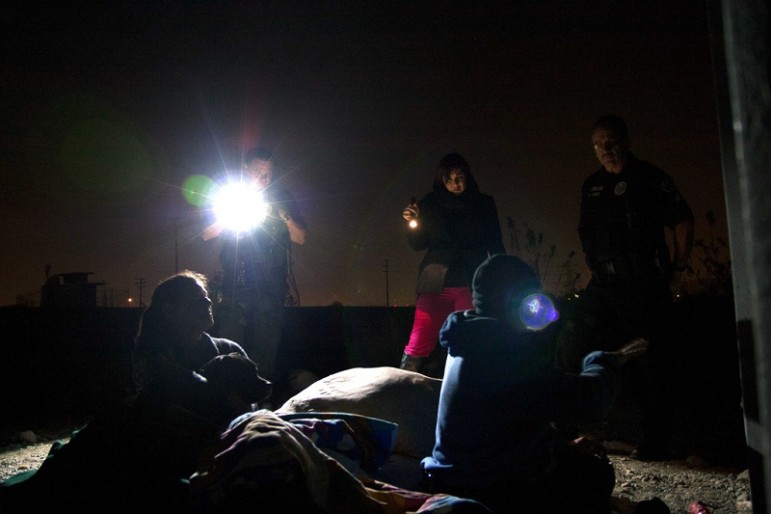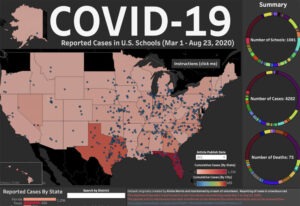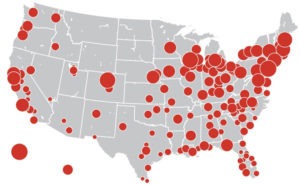
November 19, 2015; National Public Radio
A number of news stories last week raised questions about the reliability of the data in the U.S. Department of Housing and Urban Development (HUD) report on homelessness. The first and most comprehensive story was NPR’s “New Stats Boast A Dip In Homelessness—But They’re Not The Full Story.” Reporter Pam Fessler raised some challenges to policymakers’ use of data to demonstrate progress in eliminating homelessness. Marketplace’s Noel King, in her report, focused on HUD’s definition of homelessness and questioned whether “couch surfers” should be counted. Then, the Washington Post article “New data show homelessness dropped early this year, HUD says, but problems persist“ covered much of the same ground with some twists. For NPQ readers, these concerns about HUD data aren’t exactly news. Gayle Nelson examined the dispute between HUD and the Department of Education definition of homelessness in her article, “Data? It Depends! Counting Homeless People Depends Upon Your Definition.”
Two key questions in all these stories: Who is homeless, and what is HUD measuring?
Who’s homeless? HUD’s definition of who is homeless in the “Point in Time” (PIT) count comes in for a lot of criticism in these news stories. For the annual PIT count each January, HUD has program providers and volunteers count noses in homeless shelters and identify people living outdoors. But HUD does not count individuals and families who are “couch surfing,” or without a permanent place of residence, or living in a vehicle. PIT does not count families who are “doubling up” in units designed for a single household. So, critics ask, what does counting these homeless people tell you about homelessness?
What is HUD measuring? Washington Post’s Linda Rein writes, “HUD officials said the decline, of a total of 11 percent since 2007, is an encouraging sign that the Obama administration is succeeding in its five-year-old goal of preventing and ending homelessness and ending what the government calls chronic homelessness by 2017.” In support of similar claims, there has been a drumbeat of news reports claiming dramatic success in reducing homelessness among vets. There are plenty of examples in the Huffington Post index. But the new PIT study provides a moment of reflection for HUD officials. NPR’s Ms. Fessler cites Ann Oliva, Deputy Assistant Secretary (DAS) at HUD, to explain the small drop in the most recent count:
One problem is that more than 6,000 homeless vets have been given housing vouchers, but can’t find apartments that will take them. She says this lack of affordable housing is also one reason that cities like New York and Los Angeles are seeing an increase in homelessness, despite the overall decline.
In other words, sorry; the problem’s beyond HUD’s control. In a longer interview in HUD’s PD&R Edge magazine, DAS Oliva recounts cobbling together the Homelessness Prevention and Rapid Rehousing Program (HPRP) using “stimulus funds” in the crisis days of 2007.
Sign up for our free newsletters
Subscribe to NPQ's newsletters to have our top stories delivered directly to your inbox.
By signing up, you agree to our privacy policy and terms of use, and to receive messages from NPQ and our partners.
I wanted to give folks some flexibility; to test some interventions that had not been done at that kind of scale before. I wanted to take the opportunity to do systems change work, including work with data collection and coordinated entry, in addition to serving people who were at risk of or were becoming homeless because of the recession.
Unfortunately, the fruits of that effort have (so far) been more about service delivery than about homelessness prevention. HUD’s latest study of HPRP is based on surveys of providers and seems to focus on process goals (how many participants served and how long they were in the program) and not on outcomes.
In all this haze of data, three issues about homelessness beg for attention.
- Because homelessness is a complex of personal problems (e.g., mental health) and social problems (e.g., income insecurity), it may not be measurable by a single indicator like the PIT count.
- Because the homeless are not in a petri dish and belong to demographically and geographically distinct cohorts, just counting them may not tell us much about the efficacy of program interventions.
- “Intervening variables” may have more influence on homelessness than a program intervention. One could, for example, reasonably argue that the modest reduction in the PIT count this year is a by-product of the shrinking unemployment rate or the decrease in the number of uninsured citizens.
Are data worthless in planning to end homelessness? Hardly, and HUD should know better! One of the most significant social experiments of the 20th Century has been the Gautreaux Project and HUD’s Moving to Opportunity program. Data derived from these efforts to move households from concentrated inner-city public housing blocks to conventional suburban neighborhoods yields new social insights year after year. Perhaps this was the vision that Director Oliva hoped to realize for HPRP. But in a crisis like the explosion of the housing bubble, selling a longitudinal study like Gautreaux/MTO doesn’t win you many points in Congress. The Obama administration was selling “shovel ready” and numerically accountable solutions. In that atmosphere, how does HUD move beyond the 19th-century social survey model towards the Big Data reality of the current century?
Happily, some efforts to create transformative data are being implemented within the nonprofit sector. NPR’s Ms. Fessler cites Beth Sandor, of the nonprofit Community Solutions, as a nonprofit leader who is building a more comprehensive real time approach to tracking the whole homeless population:
If you’re trying to solve an emergent problem, which is in front of you every day, the data that you need needs to be as real-time as the problem is.
An even more adventurous effort is being undertaken in New York City, where geeks and social practitioners are teaming up to predict who will become homeless before they present themselves to a social agency.—Spencer Wells













